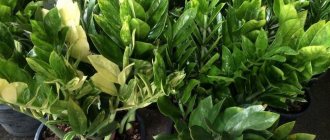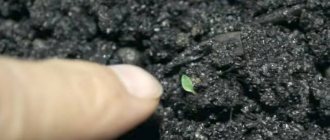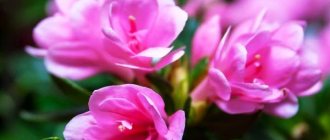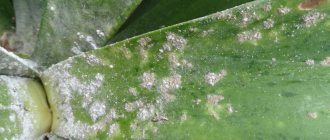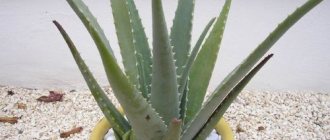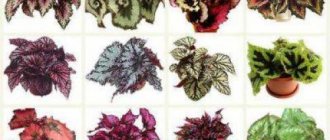How nice it is to eat a tangerine grown with your own hands! Both the taste and aroma are incomparable. And the tree itself is incredibly beautiful, pleasing all year round with its oily, dense foliage and sunny fruits. Growing tangerines at home is not an easy task, but with some effort and patience, even a beginner can cope with it. The right variety and compliance with the rules of care will give results - such a plant will delight its owner for at least 20 years. We will tell you in detail how to plant a tangerine and care for it at home.
Choosing a variety of decorative tangerine
In order not to be disappointed and get fruits already in 4-5 years, you should approach the choice of the future plant correctly. Breeders have developed dwarf varieties of tangerines especially for home breeding. They require less care, grow quickly, bloom and bear fruit abundantly.
It is best to choose from the most unpretentious varieties:
- Pioneer: large fruits weighing about 90 g, low, branched crown;
- Sochi: the weight of each tangerine exceeds 80 g, thin-barked;
- Kawano-Wase: height - up to 1 m, bears fruit in the second year after planting, yield from one tree - 100-120 tangerines with a diameter of 5-7 cm each;
- Nova: fragrant flowers, sweet fruits, but difficult to peel;
- Unshiu: reaches 1.5 m in height, bears fruit in the third year, seedless.
The choice of variety depends on what conditions will be created for the full development of the plant.
Attention! You should not purchase tall specimens for a small room. The tangerine will need space and a large pot. It is better to grow very low-growing varieties on the windowsill, for example, Pioneer.
Necessary rules of care during flowering/fruiting
Tangerine trees must be treated during flowering and fruiting with special products that contain phosphorus and valuable potassium. It is worth watering regularly, but do not overfill the plant with liquid. When the tangerine has bloomed, you need to continue irrigating with water, protecting the flower area.
It is very important to control the load on the tree. If necessary, you need to free the tree from excess fruits and flowers.
Experts recommend leaving one tangerine per 20 leaves.
If the tree is not watered on time and treated with a large amount of nitrogen, then the ripe fruits will burst. Do not forget that the tangerine for its flower buds urgently needs rest in the winter.
Planting and propagating indoor tangerine
Creating ideal conditions for a plant is half the success. Mandarin loves the sun, but does not tolerate too high temperatures. It is demanding of moisture, but dies with excessive watering. It grows all year round, but requires winter dormancy to bear fruit.
Where to plant
The optimal place for a homemade tangerine is a window sill on the south or west side of the house. With short daylight hours, the plant needs additional lighting. A draft is detrimental to it, so the location is chosen taking into account the possibility of careful ventilation. You can’t often move the tangerine from place to place - there is a high probability of stress. Only once every two weeks is the pot with the plant rotated 10° so that the entire crown receives the same amount of ultraviolet radiation.
Important! In summer, the tangerine needs “walks” in the fresh air. If it is possible to keep it outside throughout the warm season, that’s good. The main thing is to protect it from the wind.
Requirements for soil and pot
Mandarin does not like acidic soils, so there should be no peat in the ground. It is best to purchase a special substrate for citrus fruits at a flower shop - it is ideal for growing a heat-loving southern plant at home. Soil acidity (pH) should not exceed 6.5-7 (usually it is indicated on the package with soil).
You cannot immediately plant a tangerine in a large pot - there is a great danger of waterlogging or acidification of the soil. To begin with, a container with a depth of 8-10 cm and a diameter of 7-8 cm is enough. Only when the root system fills the volume of the pot, do they transfer it to a larger one, increasing the diameter by 4-6 cm annually. Flowering and fruiting plants should not be replanted. Mature trees do not move at all, limiting themselves to updating the top layer of soil.
Reference. The material of the pot is not so important; it can be ceramic, plastic or wood. The main thing is that there are drainage holes for good soil aeration and protection from mold.
Growing from seed
The most labor-intensive process and unpredictable result. When growing tangerines from seeds, the plant does not bloom for a long time, and fruiting may not occur at all. The fruit will be smaller and have a different taste than the parent fruit. But it is interesting to observe the whole process from germination to ripening.
For germination, only healthy seeds are taken - they do not look dried out, without damage or black tops. The faster the grain gets from the tangerine into the ground, the better. But if this is not possible, the seeds are germinated in damp gauze.
Meanwhile, prepare the container. At the initial stage, even a 0.2 liter plastic cup with drainage holes pierced in the bottom will do.
Soil for citrus fruits is purchased at a flower shop, as it is guaranteed to be disinfected and has optimal acidity. Hatched or fresh seeds are deepened 4 cm into the soil. Provide moderate watering as the top layer of soil dries.
Important! Do not cover with jars or plastic. The plants tolerate home cultivation well, but greenhouse conditions are detrimental to them.
After 15-30 days (depending on the variety), the first shoots will hatch. When four leaves appear, the seedlings are transferred to pots with a diameter of 8-10 cm and a depth of at least 12-15 cm. If all the seeds have sprouted, they are placed in separate containers. It is best to plant at least 5-8 seeds. Firstly, not everyone will germinate. Secondly, for vaccination.
Tangerines grown from seeds take a long time to grow and require additional procedures:
- Crown formation. Only branches of the 4th-5th order bear fruit, so first pinch off the main shoot after reaching 35-40 cm in height. Then, as the side branches appear, they are cut off after the appearance of 5-6 leaves. The whole process takes 4-5 years.
- Feeding. It is best to fertilize with special mixtures for citrus fruits, but organic ones are also suitable. Tangerines respond well to mullein diluted in a ratio of 1:10.
- Hibernation. In order for the tangerine to begin to bloom, at the age of 5-6 years it needs seasonal dormancy at a temperature not higher than +10...+12°C and darkening for 3-4 months.
- Stimulation of flowering . If, after a period of winter dormancy, the tangerine does not bloom, perform the following procedure: copper wire is tightly tied to the lower part of the trunk, as a result of which the sap flow slows down and the plant blooms.
- Load control. For every 20 leaves, one flower or ovary is left. This way the plant will not be overloaded and will be able to bear fruit fully.
From seedlings
The most proven way to get guaranteed results. The seedlings are either grown from cuttings or already grafted. The most resilient and low-growing varieties are grown for sale. You can get a harvest already in 2-3 years (depending on the age of the plant). Their care is minimal: lighting in winter, timely watering and fertilizing.
From layerings
A good option for getting a home plant from exactly the variety you like. This can be done where tangerines grow in their natural environment.
Select a one-year-old branch 20-25 cm long and cut it obliquely with a sharp knife. The bottom of the layer is freed from bark and leaves, the top is pinched. Then wrap it in a damp, thick cloth, place it at an angle of 45° in a shallow dish and periodically add water. 2-3 weeks after the roots appear, the cuttings are transplanted into a pot with a diameter of 20-25 cm and a depth of 30 cm and placed in a permanent place.
Further care consists of regular watering, fertilizing with nitrogen fertilizers and crown formation. After 3-5 years (depending on the variety), the tangerine will need winter rest before flowering.
How to get rid of pests?
Professional flower growers noted that tangerines that were grown from seeds are much less likely to be exposed to various diseases. However, this does not mean that the plants are resistant to pests. Despite the fact that in most cases the tree is in the house, it is still affected by spider mites, scale insects, mealybugs and aphids. For information on insect control methods, see the list below:
- Spider mite. The most common parasite that is almost invisible to the human eye. However, the presence of a spider mite can be determined by small light dots on the underside of the leaf, as well as by the presence of very thin webs. You can deal with parasites using a soap solution or tobacco smoke. In advanced cases, insecticides will help, for example, the drug “Vertimek”.
- Shield. This parasite consists of small convex oval-shaped plates, the size of which rarely exceeds 4 millimeters. A clear sign of its presence is a gray coating on the leaves and fruits. If the pest is not destroyed in time, then sooner or later the plant will become depleted and dry out. A kerosene solution (10 grams of kerosene per 1 liter of water) will help cope with the scourge.
- Mealybug. A very dangerous parasite that appears as a white and fluffy coating scattered throughout the plant. The insects themselves are invisible to the human eye, however, they deplete the plant at tremendous speed. You can cope with a dangerous parasite using a soap solution with the addition of a few cloves of garlic (2 pieces for every 0.5 liter of water.
- Aphid. Well, this insect is known to everyone. Seeing a winged parasite is not difficult. However, aphids are capable of multiplying very quickly, since they live in entire colonies. Its harmfulness lies in the fact that it sucks life-giving juices from the leaves and young shoots of the plant, as a result of which it becomes depleted and dies. An infusion of tobacco (40 grams of dry matter per 1 liter of water) will help you cope with the parasite.
Remember that in advanced cases, fighting parasites using various folk remedies will be almost pointless. Therefore, do not forget about the possibility of using insecticides
Yes, such drugs are very toxic chemicals, so they should be used with great caution (especially on fruit crops). However, it is better to lose the crop than the entire plant that has been grown for a long time
Tangerine grafting
If you managed to grow a plant from a seed, but it does not bear fruit, there is a way out. A bud from a cultivated tree is grafted onto a tangerine. But it is best to do this in advance, until the sprout exceeds 20 cm in height.
For the procedure, you will need a scion from a varietal plant - a bud with a leaf petiole.
On a seedling grown from a seed, an incision is made in the bark in the shape of the letter T, where the top crossbar is 1 cm long and the “leg” is 2.5 cm. The edges are folded back and a bud of the cultivated plant is inserted inside. Then the bark is pressed tightly, the cut is treated with garden varnish and tightly bandaged with a bandage. After 3-4 weeks, the cuttings of the grafted bud will turn yellow and fall off. The bandage is removed and the top of the stone fruit plant is cut at a 45° angle 5 cm above the new branch.
This is interesting! How does a tangerine bloom? Once a year, in spring, small white flowers with a pleasant aroma shower the entire tree.
Buying Tips
You can find mature trees on the Internet or in a specialized nursery; all you have to do is buy them and just start caring for them. But formed fruit-bearing citrus fruits will cost you more than a seed or sprout from which you will grow a beautiful plant yourself. But not everyone finds it easy to immediately resort to plant propagation.
If it is easier for you to buy an already grown plant, then do not forget to check with the seller for the certificate. Many people pass off calamondins as tangerines. This type of plant smells like tangerines and even bears fruits, but they have no taste. But they can deceive you in a supermarket or at the market, and in special nurseries they value their reputation.
Features of caring for a tangerine tree at home
No matter how the plant is planted, it requires maintaining certain conditions and careful care.
Temperature
In the summer, tangerine feels good outside, even at night, if it is warm enough. The optimal temperature is +25…+30°С. In spring and during the flowering period, the air should not warm up above +18...+20°C, otherwise the buds will fall off.
In winter, tangerine is in a resting phase at a temperature of +10...+12°C.
Lighting
Mandarin is a southern plant that loves long daylight hours. During the rest period it needs darkening. In autumn and spring, it requires additional lighting, extending the day by 2-3 hours in the morning and 3-4 in the evening. To do this, use special phytolamps or ordinary fluorescent ones.
Humidity
In their natural environment, tangerines grow in a subtropical climate. There the air humidity reaches 100%. But in an apartment they feel great even at 60-65%. To ensure this level, it is enough to use a humidifier or place open containers of water near the pots.
Watering
You should not use chlorinated tap water - this is destructive for most house plants . For watering, it is best to use rain or bottled water at a temperature not lower than +20°C. If this is not possible, let the tap water sit for 2-3 days and only then water the tangerines.
The soil should not be over-moistened, nor should it be allowed to dry out. The guideline is the top layer of soil - there should be no dry crust on it. In summer, watering is done more often, in winter - less often.
Tangerines are very responsive to spraying. Using warm, settled water from a spray bottle, moisten the entire crown with the exception of the buds during the flowering period 2-3 times a week.
Feeding
At least twice a month, special complex fertilizers for citrus fruits are applied to the soil (they are sold in flower shops) . In summer, it is better to use organic manure - manure diluted with water in a ratio of 1:10. But in this way there is a high probability of introducing pests or pathogens into the soil.
If there is a need for transplantation or flowering, or the tangerines are at rest, you cannot feed them.
Protection from diseases and pests
Mandarin is often attacked by insects and pathogens.
Main pests:
- spider mite;
- aphid;
- citrus nematode;
- scale insect;
- whitefly;
- greenhouse thrips;
- mealybug.
If insects are found on the plant, they are fought with insecticidal preparations: “Actellik”, “Sulfarid”, “Aktofit”, “Ferramol”. But they cannot be used during the flowering or fruiting period, so that harmful substances do not accumulate in the fruits.
In this case, gentle methods are used:
- pests are removed from plants manually;
- tangerines are sprayed with soap (10 g per 1 liter of water) or vinegar (1 tsp 9% per 1 liter of water) solution;
- if affected by a nematode that lives in the soil, the bush must be transplanted into clean soil.
Pathogenic microorganisms cause diseases of tangerines:
- Anthracnose: with excessive moisture, light spots appear on the leaves, which darken over time. The infected parts of the plant are cut off, and the bush is sprayed with any fungicide.
- Late blight: brown rings on trunks. If found, they are cleaned off and the tree is sprayed with a 3% solution of copper sulfate.
- Gommosis: brown spots on branches leading to damage to the bark and cracks. Clean the infected areas and treat with 3% copper sulfate.
- Root rot: yellowing and falling of leaves. As a rule, once detected, it is too late to save the plant.
Tangerine diseases caused by viruses or bacteria cannot be cured.
Correct lighting
Mandarins require sunlight at home. Leaving without this is unacceptable. Then the tree will be healthy and the fruits will be juicy. Adult tangerines are placed on eastern or western windows. But the young ones are on the north side.
The plant also feels good near the south side, but the windows should have blinds to diffuse the light. Direct sunlight should not hit the foliage - ultraviolet light will burn the crown and dry out the soil.
In summer, take the citrus out to the balcony, or you can leave it in the garden. Place the tub under a spreading tree to soften and diffuse the incoming light. At noon, cover the plants at home from the sun; in the late afternoon, open them.
In winter, it is recommended to supplement tangerines with phytolamps. If you use special lamps, then sometimes rotate the tub around its axis - the same amount of light should fall on all sides of the plant. The duration of the day is eight to twelve hours, otherwise the plant will weaken, the leaves may turn yellow and fall off over time. And the recovery process is very long - you will have to spend a lot of time on it. And even this does not guarantee that citrus will be able to cope with such stress.
Temperature and humidity
In spring, the first buds should appear. During this period, you need to maintain a temperature of +20 − +25 degrees. If the temperature is lower, the citrus will be covered with barren flowers - they will smell very pleasant, but you can’t count on a harvest.
In winter, move it to a cool room, but lower the temperature gradually - a sharp cold snap threatens the leaves falling off. First keep the temperature at +18 degrees, then +16 and +14. Coolness is needed for the tangerine to rest and gain strength. This kind of winter holiday will allow the citrus to develop better - there will be more buds and the fruits will be sweeter.
Replanting and pruning
To form a tangerine crown, two methods are used: pinching the tops and forced growth in the desired direction.
In the first case, the main trunk is cut off when it reaches 25-30 cm and all side branches above 4-5 leaves. This allows the tangerine to branch and take on a fan-shaped shape for better illumination of the entire crown.
In the second case, all the branches are tied to the edge of the pot with wire, forming a palm-like appearance. Then the tree will branch well and produce a lot of leaves, making it look beautiful. This method also stimulates the tangerine to bloom.
Plants are replanted as they grow. Until the age of five - annually, then - once every 4-6 years. The optimal time is early spring. In order not to cause stress to the tangerine, transplant it together with a lump of earth into a pot with a diameter 5-6 cm larger than the previous one.
This is interesting:
Health benefits and harms of tangerines, rules of consumption.
What are the benefits of kaffir lime leaves and how to use them in cooking.
Humidity mode
The tangerine tree is a resident of the tropics. Therefore, the desired humidity level for it is 65-70%. How to organize it in dry air conditions in our homes? First of all, you can place the plant next to a water source (aquarium) or simply place a plate of water near the pot.
Of course, spraying needs to be adjusted. During the heating season and summer heat, this procedure should be carried out at least 2 times a day - in the morning and in the evening. Use only filtered water at room temperature for spraying. This manipulation is carried out with caution during flowering: drops of moisture leave unsightly spots on the petals.

